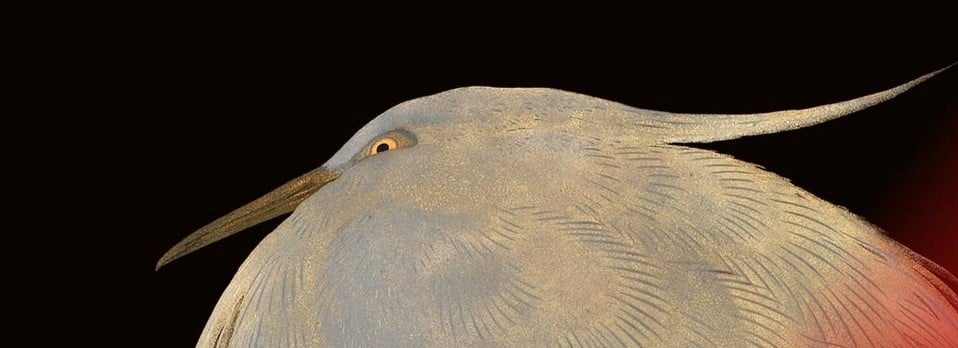
Pair of jars and covers
c.1690-1730Porcelain painted in underglaze blue, coloured overglaze enamels and gold | 63.5 x 26.0 cm (whole object) | RCIN 949
The three octagonal jars in this garniture are topped by elaborate ornaments in the shape of flower vases. Animal and figurative knobs were common on Japanese export porcelain by the 1680s and became even more ostentatious during the early years of the eighteenth century. The height of the covers also grew more exaggerated at this time, in contrast to earlier low, flat lids which mimicked Chinese forms. This may have been to emphasise their shape and height when displayed en masse in European houses.
Sprays of peony, wisteria, chrysanthemum and plum blossom appear in fan-shaped panels around the sides of the jars and matching beakers. Fans (ōgi) had been used in Japan since ancient times, and by the Edo period both paintings and lacquerware were produced in forms imitating their shape. These accessories – some so extravagant that they were proscribed by sumptuary law in 1701 – became easily recognisable symbols of Japanese culture in the West, and proved popular motifs on export porcelain.
Pair of ovoid jars, with short, octagonal neck and projecting foot; the cover, a round dome, with spreading octagonal rim and knob finial in the form of a small hexagonal vase filled with flowering stems. The sides are painted with various fan-shaped panels, containing sprays of peony, wisteria, chrysanthemum and prunus, set in a dark blue ground, decorated with gilt scrollwork, with petal border below. Round the shoulder are pendent swags, tied with tassels and fan-shaped pendants, and on the neck, lotus sprays in panels; the cover decorated to match. Octagonal beakers RCIN 26783.1-2 decorated to match.
Text adapted from Chinese and Japanese Works of Art in the Collection of Her Majesty The Queen: Volume II and Japan: Courts and Culture (2020)







